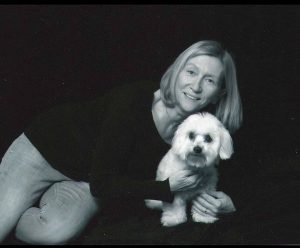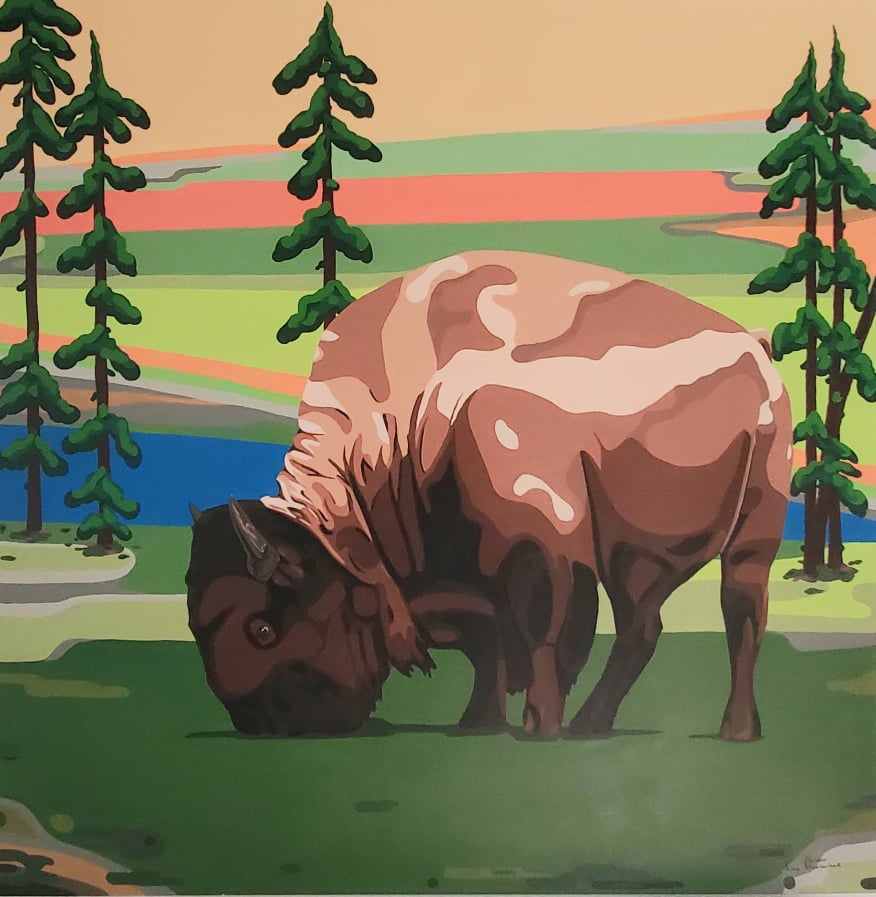I grew up in Jonquiere Quebec. My mom is the artist in the family. She still paints at 82 and excels at it. Both my dad and my brother became police officers in my hometown. I followed suit but joined the RCMP instead, as the possibility to go anywhere in Canada highly appealed to me.
I signed up in 1991. Half of my career was in Ontario. In 2007, I was assigned to international investigations which took me to India and then Pakistan. After coming back from my last deployment in 2008, I decided in consultation with my husband to stop working internationally as the last experience was traumatic for me. Unbeknownst to me, I returned home with PTSD. I didn’t realize I had PTSD for over a year. I wasn’t doing well despite immersing myself with work. Nobody suspected there was anything wrong with me except for my husband. I was a skilled actor. After talking to a colleague about my experience abroad, I was asked if I had PTSD. I didn’t even know what the letters stood for. In retrospect, this deceptively simple question saved me.
I worked in a variety of fields with the RCMP, thriving on various assignment duties: Customs and Excise, federal enforcement in counterfeit products, training by the marine unit to work on the zodiac/seadoos, and training on the ATV. I also worked on the marijuana eradication program before legalization, flying in the RCMP helicopter almost weekly seeking outdoor grow ops.
My last assignment before retiring was as a full time forensic artist in British Columbia. There were only two full time artists in the RCMP. I was on the west coast and the other one was in the Maritimes. I studied fine art in college and university before joining the RCMP. My brother once joked sarcastically, saying: “So you studied fine art to end up working with the RCMP. That was useful.” When I got my job as a forensic artist I reminded him of his joke and said: “So who’s laughing now?”
 My forensic artist training involved several weeks with the FBI in Quantico VA in composite drawing. Other training included: forensic interviewing by the RCMP, age progression on Photoshop to find missing people with The National Center for Missing and Exploited Children in Miami, and 2D facial reconstruction in Scottsdale Arizona. The 2D facial reconstruction is used when human remains are found but all other avenues of identification have failed. A photo of the skull is used to rebuild what the person may have looked like by drawing over the skull image using specific scientific measurements.
My forensic artist training involved several weeks with the FBI in Quantico VA in composite drawing. Other training included: forensic interviewing by the RCMP, age progression on Photoshop to find missing people with The National Center for Missing and Exploited Children in Miami, and 2D facial reconstruction in Scottsdale Arizona. The 2D facial reconstruction is used when human remains are found but all other avenues of identification have failed. A photo of the skull is used to rebuild what the person may have looked like by drawing over the skull image using specific scientific measurements.
Becoming a full time forensic artist took me back full circle to my original passion, art. While composite sketching is an investigative tool rather than art, I was glad to take out my pencils and blank sheet of paper to work with the victims and witnesses of crimes. A composite sketch is hard work: it takes an average of four hours of interviewing to draw a face you have never seen. I sometimes say that working with victims in the last five years of my career prepared me for retirement. Meeting with victims helped me to “re-socialize” before going into the “real world” again. I had found that working with criminals for many years gave me a distorted view of people as police officers only deal with the minority of the population that commits crimes. Working with victims showed me that there is much goodness in this world. I learned to trust people again. Not everyone is bad.
Working as a forensic artist marked thirty years since I had touched my paint brush. However, when PTSD got the best of me, I was put on medical leave. My husband was deployed to Africa for six months during that time and I found myself falling into a dark hole. One day while shopping, my son fell in love with a painting of a crow. I was going to buy it for him. My son, who wasn’t even born when I first started painting, suggested: “You used to paint, right? Why don’t you make me an original instead?” So I bought a 48″ x 48” canvas. I had never painted on such a huge surface. It had been ages since I held a paint brush. I found a photo of two ravens that I had taken in the Grand Canyon. That’s how I fell back in love with painting. This experience re-ignited my passion to put brush to canvas. If it weren’t for my son and my being on medical leave due to PTSD, I doubt I would have picked up my paint brush again. I realized that for all the job hazards PTSD entailed, this was not the end. Pushing through it gave me new life. It was not the end of the road. It was a new road. Even though my mind was not always in the right place when I needed it, painting became my way of pushing through the darkness. Painting’s rewards are immeasurable.
These days I like to paint animals and nature’s beauty as it never fails to mesmerize me. I drew faces for a long time, and while I believe I am good at it, drawing criminals for so many years got me away from portraits. Nature however does not fail us. There is too much negativity and white noise on this planet. So I tend to brighten up my life with my painting by using vibrant colours most of the time, like the ravens I painted for my son, the buffalo from our trip to Yellowstone, the goat from our move to BC, or the sap sucker bird who use to visit our tree every day.
Becoming a forensic artist has been my favorite accomplishment in my career. In 1999, I designed the RCMP ring to celebrate the 25th year anniversary of women in the force.
When all is said and done about work, what you are left with is family. They have always been my first priority. I met my husband at work. He was also in the RCMP. I fell in love with his work ethic before I fell in love with the man. I marveled at how respectful he was with people no matter where they came from.
PTSD forced me to take a step back from my career. Forensic art re-ignited my love for art. If it weren’t for PTSD, I would still be a forensic artist, but I wouldn’t be a painter. One does not exist without the other. All in all, I have no regrets. I will paint until my last breath. I am not defined by PTSD. I am defined by my art, which has been influenced by my condition in a positive way.
A wise person once said: “Your life becomes a masterpiece when you learn to master peace.” – Unknown
To see more of Line’s artwork: https://www.facebook.com/lavieenart/
The Steel Spirit is a platform for artwork submissions by Military, First Responder and Hospital Practitioners. They are always looking for new and emerging artists with and without experience, from every background and every age. For more information or if you would like to be involved, please visit: www.thesteelspirit.ca



